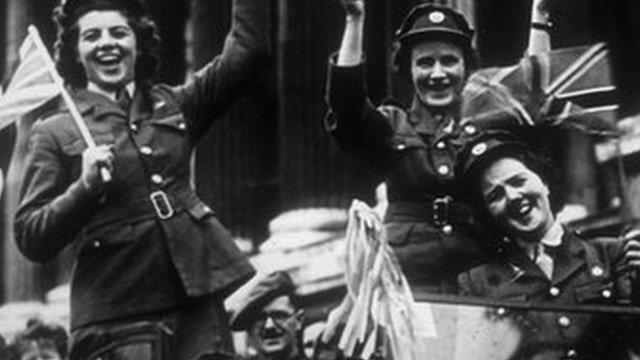VE Day: London concert held to mark anniversary
- Published
The concert at Horse Guards Parade in London had ''a flavour of the 40s''
A 1940s-themed concert has been held at Horse Guards Parade, as part of 70th anniversary commemorations of VE Day, the end of World War Two in Europe.
Thousands of spectators, including WW2 veterans, gathered at an aircraft hangar-style stage to see musical and dance acts influenced by the era.
Earlier, churches and cathedrals across the country rang their bells on the second day of celebrations.
And on Friday the Queen led a ceremony to light beacons across the UK.
Dancing couples
Saturday's concert, entitled A Party to Remember, was hosted by Chris Evans and included performances from Katherine Jenkins, Status Quo, Pixie Lott, and couples from Strictly Come Dancing.
Actors John Simm, Julia Sawalha and Laurence Fox also gave readings.
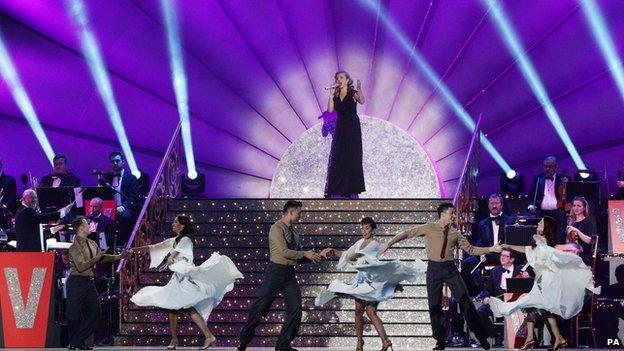
A concert was held in London's Horse Guards Parade, on the second day of VE Day celebrations
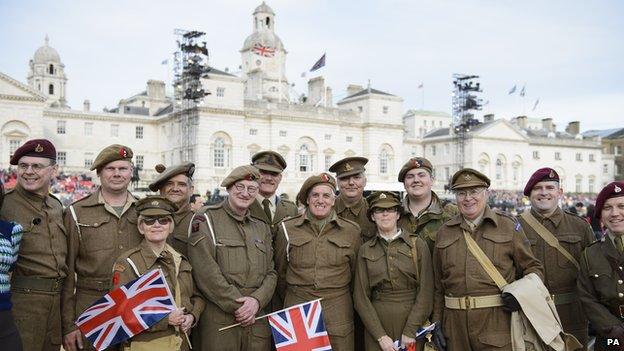
Volunteers from the Garrison Artillery Historical Display Troop joined the audience for the concert
Commemorations in Europe
Meanwhile Russia, which lost more citizens to the war than any other nation, has held a victory parade in Moscow's Red Square.
President Vladimir Putin paid his respects to Russia's war time allies in the UK and Europe.
The US, Australia, Canada and most of the EU heads of state have declined to send a representative in protest at Russia's recent actions in Ukraine.
Sir Nicholas Soames, a former defence minister and grandson of Winston Churchill, is the UK government's representative, but is not attending the parade.
He will lay a wreath in Moscow and attend the official reception.
Other European and Commonwealth countries have also held VE Day events.
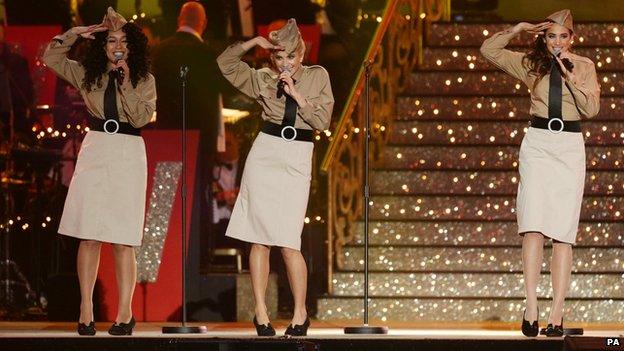
Performers at the London concert included singers Rebecca Ferguson, Pixie Lott and Laura Wright

Singer Katherine Jenkins also took part
Wreath laying
In Britain, bells rang out in victory on Saturday morning - signifying the end to the years of conflict that saw church bells hanging silent.
The Royal British Legion, which has worked with the government to prepare the commemorations, also hosted a reception for 2,000 veterans.
St Paul's in London was among the cathedrals whose bells sounded at 11:00 BST
Celebrations have also been held on the Channel Islands - the only part of the British Isles that was occupied by Nazis in WW2.
Hundreds of smaller community events were also planned across the country after schools and local authorities were encouraged to take part, while sporting events were encouraged to organise two minutes of applause.

On Friday, the band of the Welsh Guards played during the commemorations at the Cenotaph, in London

Celebrations were also held in Russia, where fireworks illuminated Red Square in Moscow
On Friday the Queen, with the Duke of Edinburgh, greeted crowds gathered to watch the ceremony at Windsor Great Park, where she lit the first of hundreds of beacons on display across the UK.
It commemorated an event on 8 May 1945, when people across the country lit hundreds of bonfires and beacons to celebrate the end of the war.

The Queen on VE Day 1945

From left, Princess Elizabeth joins Queen Elizabeth, Prime Minister Winston Churchill, King George VI and Princess Margaret on the balcony of Buckingham Palace on VE-Day 1945
By BBC royal correspondent Nicholas Witchell
Among those who joined the crowds on 8 May 1945 was the princess who would go on to become our Queen.
The then 19-year-old Princess Elizabeth slipped out of the palace with her sister Margaret and a group of about 16 friends to mingle with the jubilant throng celebrating the ending of the war in Europe.
She was wearing her military uniform as a young officer in the Auxiliary Territorial Service, so she would have blended in very naturally with the crowds. She later recalled in a BBC radio interview that she was "terrified of being recognised" and how she pulled her uniform cap "well down over my eyes", until an officer in her party told her that he wouldn't be seen with another officer who was "improperly dressed".
They walked for miles, she said, "swept along on a tide of happiness and relief".
For perhaps the only time in her adult life she was just an anonymous face in the crowd, sharing alongside her future people a moment of unparalleled joy.

More than 100 veterans and dignitaries also attended a ceremony at the Cenotaph in London's Whitehall on Friday, and at 15:00 BST - the moment Prime Minister Winston Churchill broadcast the news of the German surrender to the nation - a two-minute silence was held.
On Sunday, the Queen is due to attend a service of thanksgiving at London's Westminster Abbey.
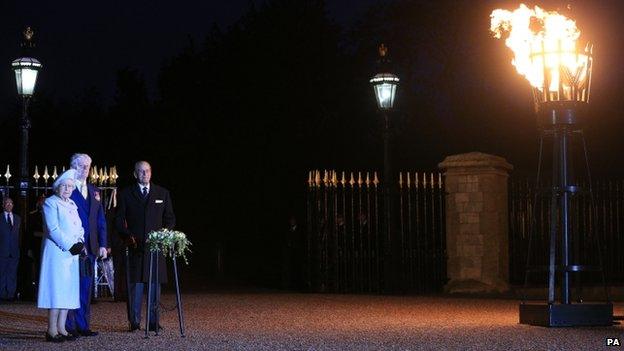
The Queen was joined by the Duke of Edinburgh in lighting the first of hundreds of beacons
Around 1,000 veterans and their families will join politicians, members of the armed forces and representatives of the Allied nations and Commonwealth countries that fought alongside Britain for the service.
A parade of bands, veterans and current servicemen and women will then make their way from the abbey along Whitehall - past the balcony where Churchill made a historic speech before vast crowds - before a reception in St James's Park.
There will also be a fly-past over central London by the Red Arrows, following a fly-by of World War Two aircraft, including the Lancaster bomber and Spitfire and Hurricane fighters.
What was VE Day?
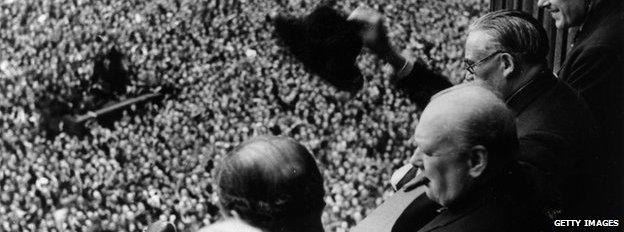
Then prime minister Winston Churchill addressed thousands of people from the Treasury balcony 70 years ago
VE Day held on 8 May, 1945, celebrated the end of war in Europe
The British government had been planning the celebration from late 1944. The code word 'MOUSETRAP' alerted ministers when VE Day was imminent
Bunting was taken off rations, pubs stayed open late and searchlights were used to light public monuments
Churchill broadcast to the nation at 3pm from Whitehall. Listeners later heard their first weather forecast since war had begun

- Published10 May 2015
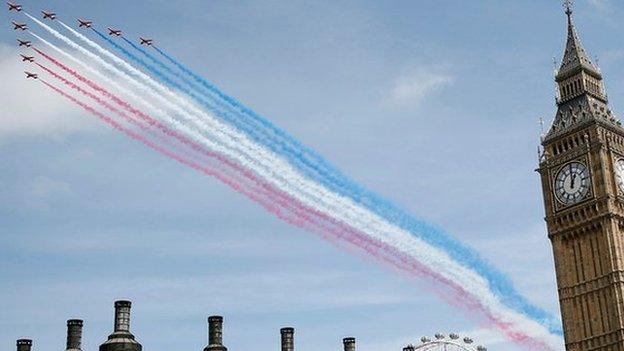
- Published9 May 2015
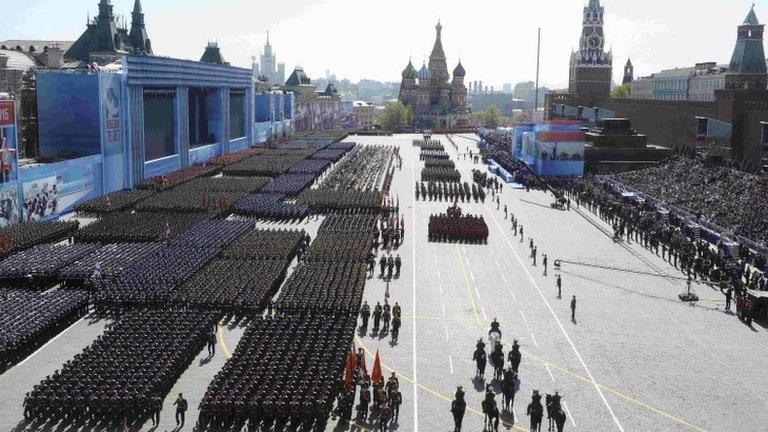
- Published8 May 2015
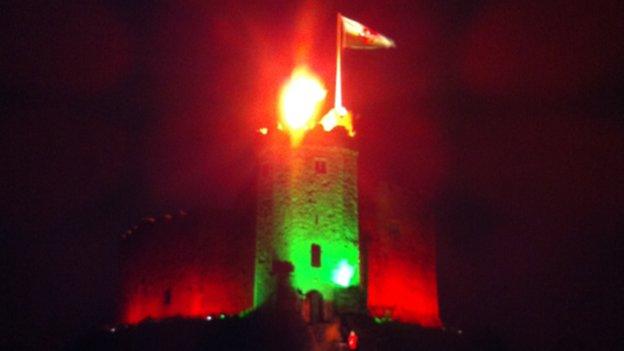
- Published8 May 2015
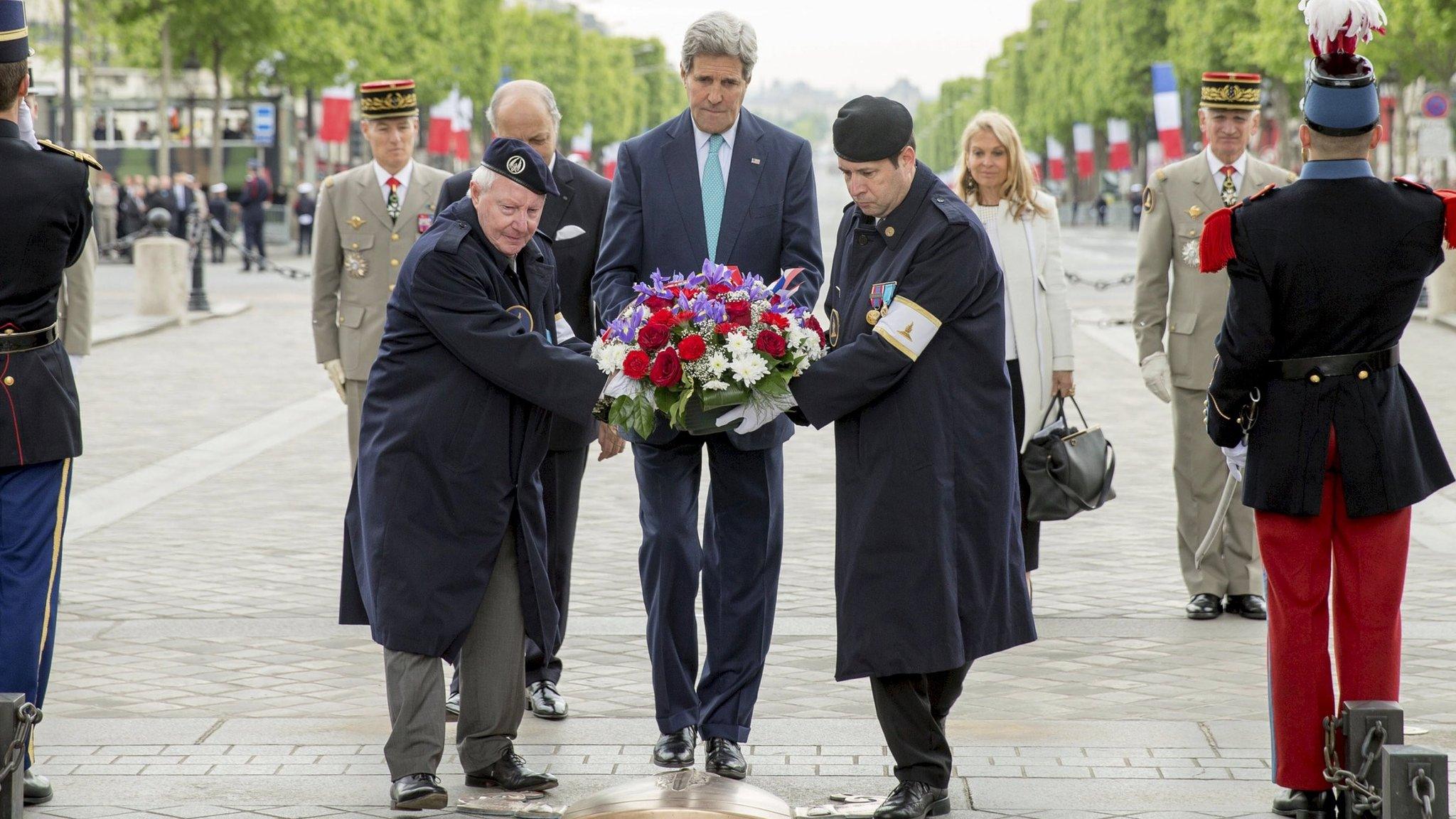
- Published8 May 2015
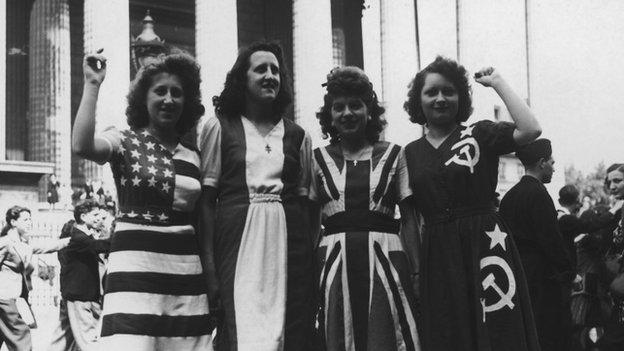
- Published8 May 2015

- Published8 May 2015
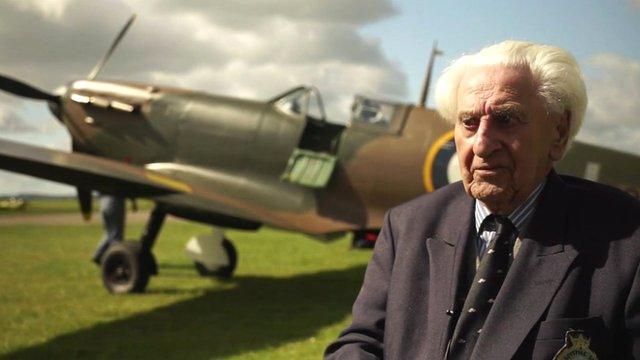
- Published7 May 2015
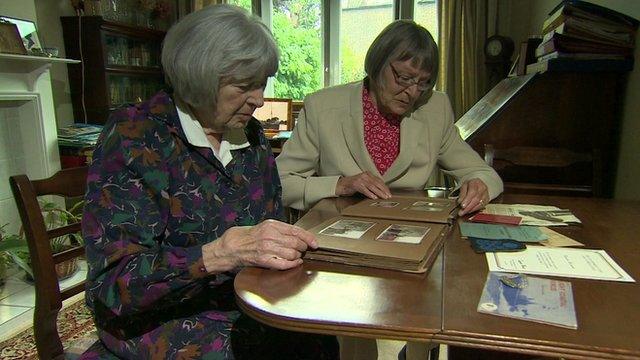
- Published6 May 2015
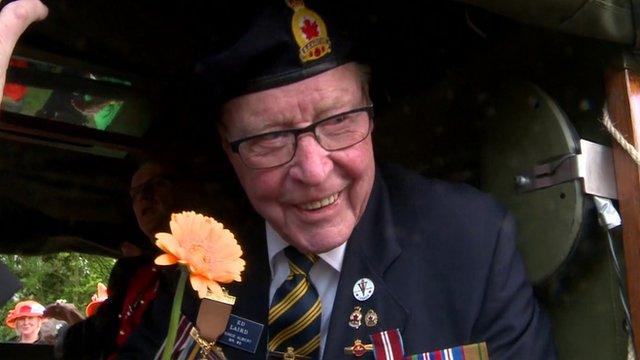
- Published6 May 2015
